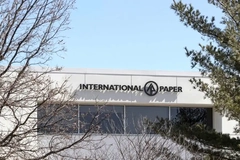UK government moves to amend packaging EPR while industry ponders costs
Key takeaways
- The UK government has tabled draft amendments to the pEPR scheme, introducing offsets for recycling, new fee criteria, and updated fiber-based definitions.
- The BRC warns that up to 80% of pEPR costs may be passed on to consumers, while Ecosurety urges clearer long-term fee structures for producers.
- While Defra pledges to use pEPR funds to improve recycling infrastructure, councils and retailers remain divided on whether the money should be ring-fenced for local recycling services.

The UK government has introduced draft amendments to the country’s packaging EPR (pEPR) before the UK Parliament. The amendments include offsets for companies implementing closed-loop waste management, fee adjustments, fiber-based definitions, and PackUK’s appointment of a Producer Responsibility Organisation (PRO).
According to Ecosurety, the UK EPR compliance specialist, the draft changes are likely to pass and become applicable in January 2026. The pEPR fees came into effect at the start of October.
Packaging Insights speaks to Ecosurety and the British Retail Consortium (BRC) to explore the latest pEPR debates in the UK.
“Given the scale of the new UK pEPR fees, we are having more and more conversations with producers about what circular solutions are available to them,” Jon Brookes, partnerships director at Ecosurety, tells us.
“While we are a compliance scheme and therefore offer practical support to our members to manage pEPR costs and reporting, fundamentally, our mission as a compliance scheme is to rid the world of unnecessary packaging.”
Draft amendments to pEPR
According to Ecosurety, the “most important updates” suggested by the government include that producers offering “closed loop collection and recycling” will be able to offset tons of packaging waste from their EPR invoices, under the “self-managed consumer waste” reporting function.
PackUK, the scheme administrator for the UK’s pEPR and extension of Defra, will be given the authority to expand the criteria used to adjust pEPR fees and costs based on whether the packaging used is “reasonably necessary,” rather than “excessive for its intended purpose.”
The definition of “fiber-based composite material” under to pEPR will be aligned with that of the government’s Recyclability Assessment Methodology (RAM). Under RAM, if fiber-based composite packaging has a plastic layer that is less than 5% of the total weight, it is considered part of the paper and board material category instead.
PackUK’s applications to appoint a PRO are open. When appointed, the industry-led PRO will play a role in the management of pEPR and “future direction of the scheme.”
Tackling cost hikes
 The pEPR fees have already led to “more extensive and holistic design” discussions in packaging companies’ board rooms, according to Ecosurety.Guy Leman, a senior communications executive at the BRC, tells Packaging Insights that new findings from the consortium suggest over 80% of costs of the pEPR “are likely to be passed onto already hard-pressed consumers.”
The pEPR fees have already led to “more extensive and holistic design” discussions in packaging companies’ board rooms, according to Ecosurety.Guy Leman, a senior communications executive at the BRC, tells Packaging Insights that new findings from the consortium suggest over 80% of costs of the pEPR “are likely to be passed onto already hard-pressed consumers.”
Ecosurety’s Brookes adds: “A big issue for our members is cost certainty over the next few years.” Ecosurety’s clients include companies such as Co-op, John Lewis, Virgin, Kellogg’s, Dr. Martens, and Peugeot.
Brookes argues that the way the pEPR policy has been designed (net cost recovery, with different fees per material) makes it “very difficult” for PackUK to state in advance what producers will need to pay in future years.
“This mechanism is complex and could undermine the incentives pEPR is intended to put in place. We believe setting fees in advance (with the ability to flex fees for the next year, if the cost budget is not met or more money is collected) would be a much better system and would help producers to make informed, longer-term decisions on packaging.”
The pEPR fees have already led to “more extensive and holistic design” discussions in packaging companies’ board rooms, according to Brookes. He says industry players are now finding ways to make sure packaging is used “most efficiently to serve its purpose (to protect the product, and ensure its longevity) while also minimizing its environmental and pEPR impact.”
Support recycling infrastructure
Leman says that while the BRC supports the pEPR’s goals to improve packaging circularity, there are concerns that the EPR will not go toward improving England’s local recycling services, as promised by Defra.
 The BRC called on the government to ensure pEPR fees are used by councils to operate local recycling.In July, Defra promised £1.1 billion (US$1.4 billion) collected in pEPR fees will be used “to improve local recycling services across England,” while simultaneously “cutting costs for taxpayers.”
The BRC called on the government to ensure pEPR fees are used by councils to operate local recycling.In July, Defra promised £1.1 billion (US$1.4 billion) collected in pEPR fees will be used “to improve local recycling services across England,” while simultaneously “cutting costs for taxpayers.”
Leman tells us that the Local Government Association (LGA) rejected Defra’s assertion.
The LGA’s Daisy Robert responded to Defra and the BRC’s findings about the effects of pEPR fees on prices: “We reject the call to ring-fencing that says funds can only go on collections. That is, in practice, a call for industry control of council waste services. Every place is different, and democratically elected councils must be free to invest where it helps residents most.”
Robert adds that councils support the polluter-pays principle. “The pEPR should be the spur for industry to cut unnecessary packaging, design packaging for reuse and recycling, and phase out hard-to-recycle materials so costs for consumers come down.”
Meanwhile, the BRC called on the government to put in place legal restrictions (ring-fencing) to ensure the money raised from pEPR can only be used by local councils to collect and operate local recycling, as well as fund improvements to local recycling systems.
Ecosurety’s Brooks says: “We remain positive about how EPR will drive a shift toward a circular economy, and it will require continued industry collaboration and engagement with government to iterate the system over time.”











